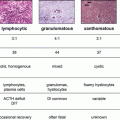© Springer Science+Business Media New York 2015
Terry F. Davies (ed.)A Case-Based Guide to Clinical Endocrinology10.1007/978-1-4939-2059-4_1111. Treatment of Hypothyroidism: Utility of Adding T3 (Liothyronine)
(1)
Thyroid Unit, Massachusetts General Hospital, Harvard Medical School, 15 Parkman Street, WAC 7-730S, Boston, MA 02114, USA
Keywords
Thyroid glandThyroxine (T4)Liothyronine (T3)ThyoxineLevothyroxineObjectives
To understand the utility of liothyronine replacement treatment in patients already on levothyroxine for the treatment of hypothyroidism
Case Presentation
A 41-year-old man presented initially for the evaluation and management of a thyroid nodule, which was noted incidentally on imaging. Further evaluation revealed the presence of a papillary thyroid carcinoma. A total thyroidectomy was performed and he immediately started taking levothyroxine as the standard replacement therapy. Based on his stage of cancer, TSH suppression was not required and therefore the TSH goal was to remain within the normal reference range. The initial dose was calculated based on his weight, and he started taking 150 μg of levothyroxine daily.
Two months after starting levothyroxine, his TSH was normal at 0.89 μIU/mL (reference range 0.40–5.00). At that time, he complained of some fatigue, particularly at the end of the day, which he characterized as unusual for him in comparison to his baseline prior to surgery. No change was made in his regimen as the serum TSH concentration was in the lower end of normal range.
Four months after starting levothyroxine, his symptoms progressed. He described his fatigue as “extreme” and he reported weight gain. He was unable to complete his usual workout at the gym. His TSH remained in the normal range at 3.11 μIU/mL. At that time, the possible management options included watchful waiting with the same therapy or the addition of liothyronine to his replacement regimen. After discussion with the patient, he chose to wait and monitor his symptoms without further intervention.
However, 6 months after starting levothyroxine, his symptoms persisted without any improvement. Based on a repeat discussion with the patient, 5 μg of liothyronine once daily in the morning was added to the levothyroxine 125 μg daily. A TSH level was not checked at this time as the TSH level had been consistently within normal reference range on the stable levothyroxine dose and the liothyronine trial was for symptomatic improvement. After 4 weeks, he reported no improvement. The liothyronine dose was increased to 5 μg twice a day and the levothyroxine was decreased by 75 μg/week. After this change, he started noticing improvement. His fatigue improved and he was able to go to gym again.
As he was not yet back to baseline, 3 months after adding liothyronine to his regimen, the liothyronine dose was increased to 10 μg in the morning and 5 mcg in the early afternoon. He then reported feeling “almost back to my old self again.” His subsequent TSH was 0.1 μIU/mL. Given his excellent overall physical status and the significant clinical improvement on the current regimen, no further changes were immediately planned. The option of slightly lowering the levothyroxine dose further in order to allow the TSH to return within reference range could be discussed at future visits. His case illustrates the utility of adding liothyronine to patients already on levothyroxine for the treatment of hypothyroidism.
Review of How the Diagnosis Was Made
Under normal circumstances, the main hormone product of the thyroid gland is thyroxine (T4). About 90 % of the total daily hormone product of the thyroid gland is thyroxine and 10 % is liothyronine (T3). T3 is the biologically active hormone. Thyoxine is converted into liothyronine in the periphery, the liver being a major site. After documentation of this peripheral conversion of T4 to T3, levothyroxine has become the mainstay of thyroid hormone replacement. However, as some patients report hypothyroid symptoms despite T4 replacement and a serum TSH concentration within normal reference range, as in this patient’s case, the use of combination T4 and T3 therapy could be considered. In this case, as the liothyronine was increased, the levothyroxine dose was decreased. The liothyronine was dosed as a twice a day dose given its short half-life and rapid gastrointestinal absorption in comparison. Peak levels of liothyronine are 2–4 h after administration and steady-state cannot be achieved with once daily dosing. The dose changes of liothyronine were in small increments and increased gradually, similar to the standard practice with levothyroxine. As this was a trial to determine symptomatic improvement with only small dose changes, the dose of liothyronine was titrated mainly to symptoms only. As he reported improvement with the combination therapy, he proved to be a patient who benefited with combination therapy. As discussed in detail below, there are no other current clinically available options to distinguish responders prior to initiation of combination therapy. A trial of adding liothyronine with gradual dose changes is the only available way to determine who will respond positively to combination therapy of T3 and T4.
Stay updated, free articles. Join our Telegram channel

Full access? Get Clinical Tree




